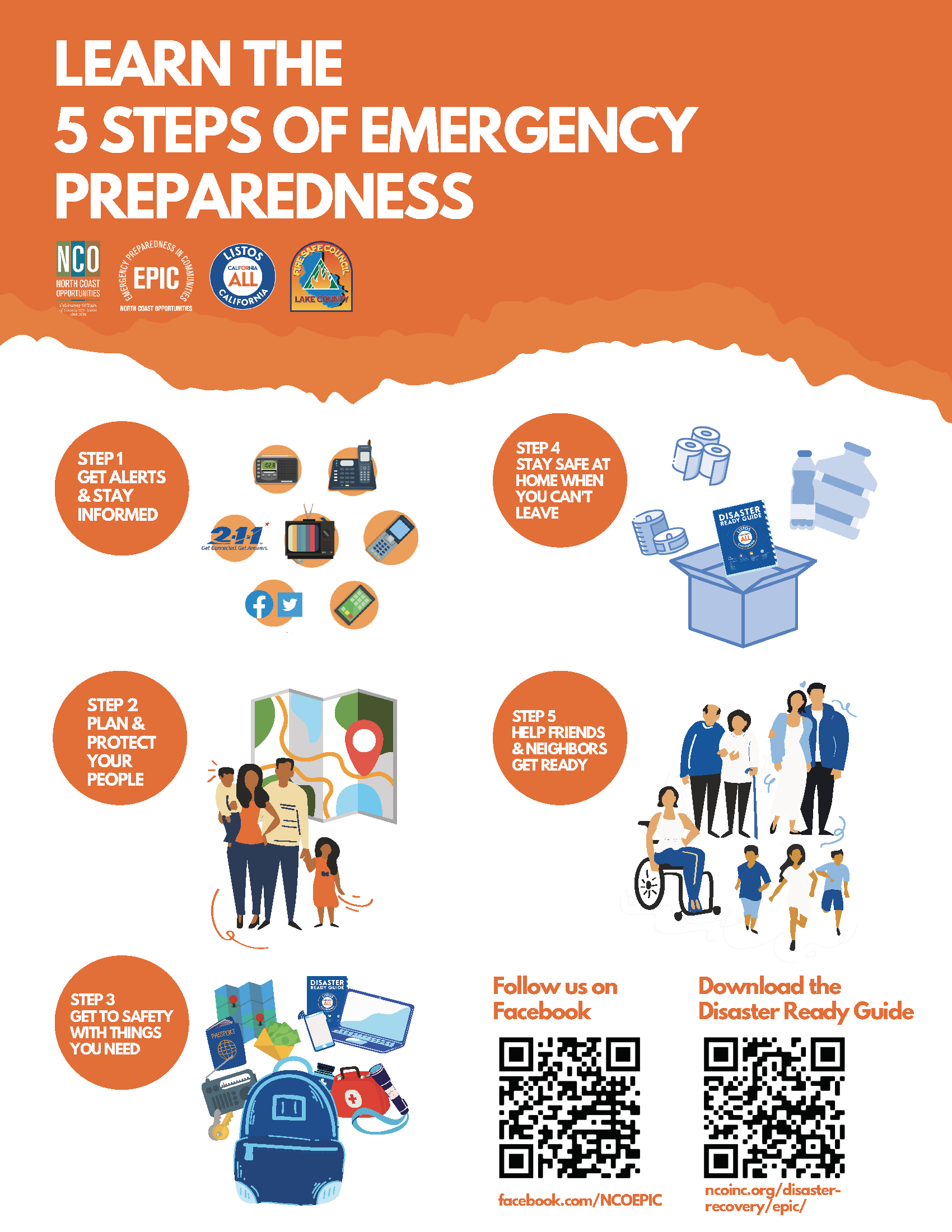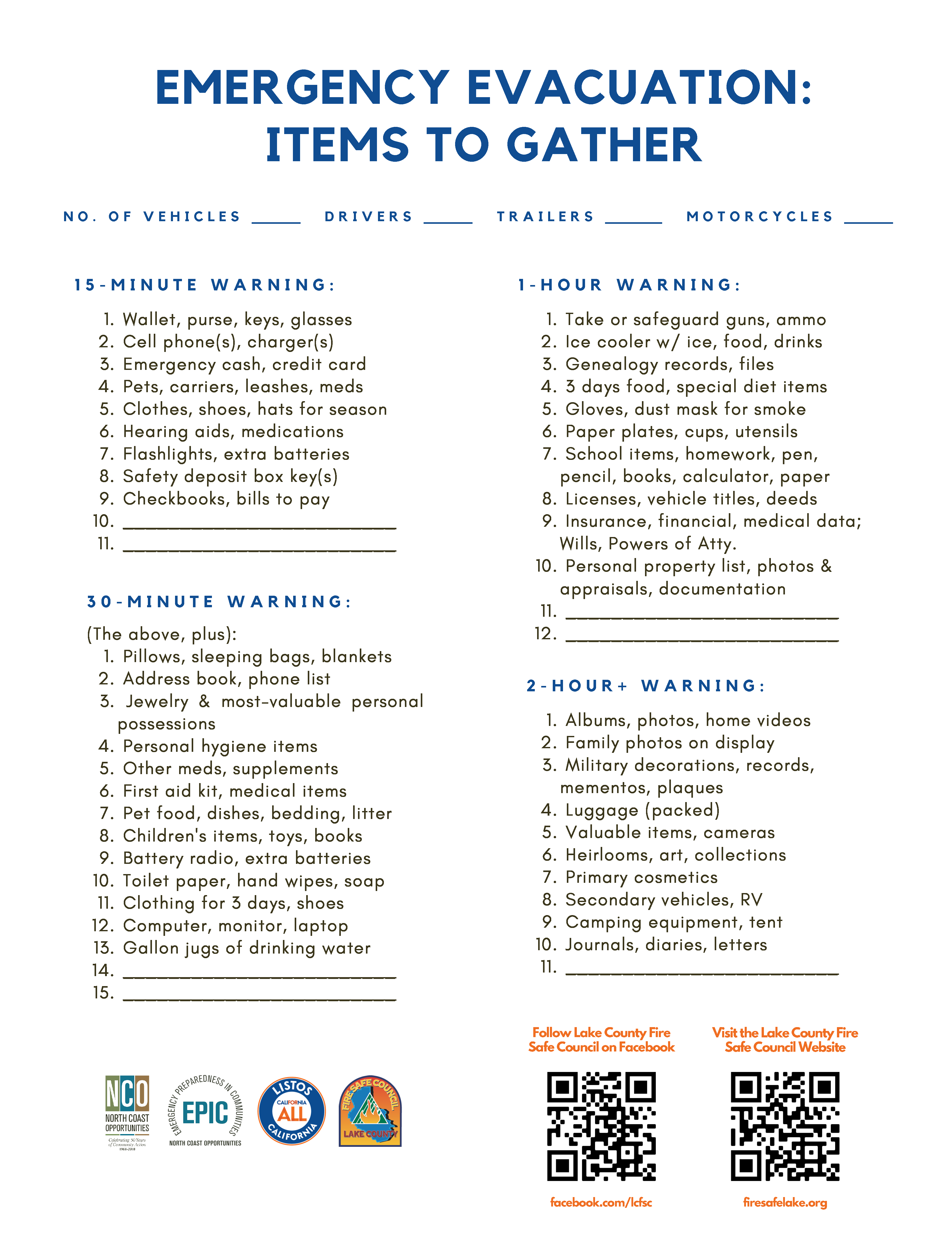Evacuation Checklist
During severe fire weather (Red Flag Warning), a fire is burning nearby, or an evacuation is anticipated, follow this checklist (if time permits) to give you and your home the best chance of surviving a wildfire. Read through it BEFORE a fire, to better understand your priorities and decision-making process when a fire strikes.
GENERAL
-
- Monitor all available information sources – Nixle, social media (Facebook), local media (TV and radio), and use your senses to be aware of the situation outside.
- Monitor local news and radio stations for fire information.
- Alert your neighbors to heightened risk on Red Flag Days, or when a fire is burning nearby, especially if they are have children, or are elderly or disabled.
COMMUNICATIONS
-
- Ensure your cell phone is fully charged.
- Notify an out-of-area contact of your phone number, location and status. Update regularly.
- Leave a note with your contact info and out-of-area contact taped to refrigerator or inside a front window.
- Check on or call neighbors to alert them to prepare.
PERSONAL
-
- Dress all family members in long sleeves and long pants; heavy cotton or wool is best, no matter how hot it is.
- Wear full coverage goggles, leather gloves, head protection.
- Cover faces with a dry cotton or wool bandanna or scarf over an N95 respirator.
- Carry a headlamp and flashlight (even during the day).
- Carry car keys, wallet, ID, cell phone, and spare battery.
- Drink plenty of water and stay hydrated.
- Put Emergency “Go Bag” in your vehicle.
INSIDE THE HOME
-
- Shut all windows and doors (interior too) and leave them unlocked.
- Remove combustible window shades and lightweight curtains; close metal shutters.
- Move furniture to the center of the room, away from windows.
- Leave indoor and outdoor lights on for firefighters.
- Shut off HVAC and ceiling fans.
PETS & ANIMALS
-
- Locate your pets and place in carriers NOW. You won’t be able to catch them when the fire approaches.
- Be sure your pets wear tags and are registered with microchips.
- Place carriers (with your pets in them) near the front door, with fresh water and extra food.
- Prepare horses and large animals for transport and consider moving them to a safe location early, before evacuation is ordered.
- Learn more about evacuating pets…
- Learn more about evacuating large animals…
Resource credit: CAL FIRE and FIRESafe MARIN


